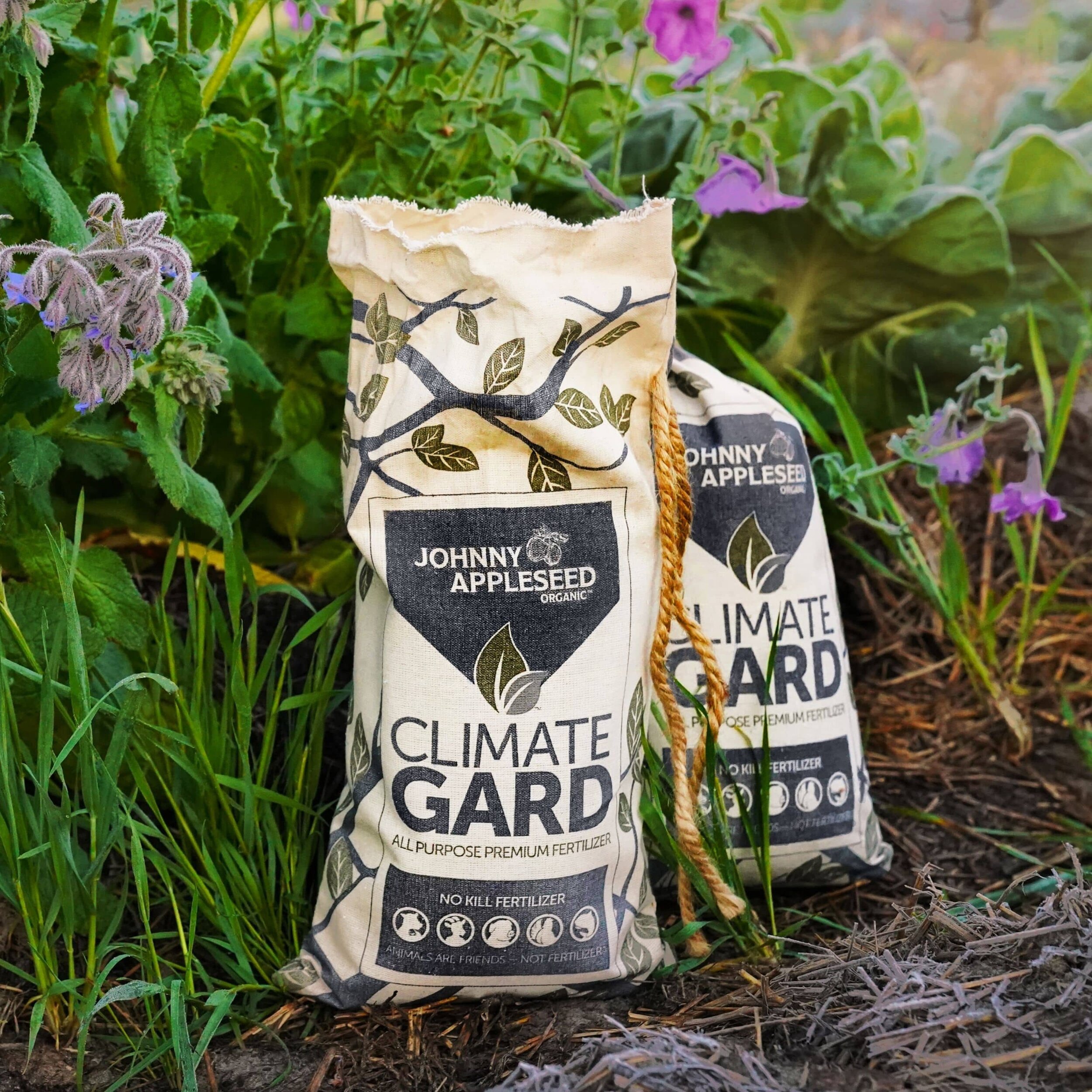Growing Shiitake Mushrooms on the Climate Farm
By Mikael Maynard
As climate farmers, one of the five tenants we follow is “ongoing soil improvement.” This is accomplished through practices like cover cropping, composting and methodically chopping and dropping intentionally-layered biomass on the soils surface to encourage the processes of decomposition.
These practices help us to establish a fungal-dominant soil biome for the purposes of creating an all around healthy soil biology in which to grow food. As a result, we see and interact with a lot of fungi on the farm! We dig through their wispy thin mycelial networks, observe the mycorrhizal nodules on roots and marvel at the array of fruiting bodies poking out of the soil surface.
As of this week, we will be interacting and getting to know mushrooms in a way that we have not yet before by intentionally growing them for food!
What mushrooms are we growing?
We purchased a strain of shiitake mushroom (Lentinula edodes) from Field & Forest Products called WR46TM. This is a “Wide Range” strain that they say is a “favorite among commercial growers and beginners.” They go on to say:
“Wide range strains take approximately 6-9 months at 75 degrees Fahrenheit to fully colonize a log, and fruit in a temperature range of 55-75 degrees Fahrenheit, so they fruit mid-spring, summer and fall in most climates. Their reliable, fast spawn run allows for a faster return on investment, as logs inoculated in the spring and placed outdoors will naturally produce a commercial crop that same autumn in southern climates, or mid-summer the following year in northern climates. WR strains are known for their ability to force fruit and recover vigor quickly after soaking.“
We chose the WR46TM strain specifically because “...in warmer areas, mushrooms are plentiful but small in older logs, especially where bark is thin.”
What grow medium are we using?
We are growing them on natural logs that we harvested from young white oaks thinned from a nearby farm in Jacksonville, Florida. We cut the 3”- 8” trunks of each tree into 36” lengths, totalling 48 logs. We let them age for a month stacked in three layers on pallets under tarps until we had a chance to inoculate them. We purchased 1,000 count of plug spawn that we stored in the refrigerator in the plastic bag it came in until we could use it.
How did we inoculate them?
On a rainy day when there was nothing to do outside, we brought the pallets of logs into our warehouse with the tractor and began the process of inoculation. This process goes as follows:
Drill 1” holes in a diamond pattern, each hole 6” apart. Use a 5/16” drill bit and you get about 50 holes per log.
Hammer one plug spawn into each hole so that it sits flush with the log’s surface.
Seal each plugged hole with pliable wax called “plug wax” to protect the spawn from drying out or becoming contaminated.
Label the logs with the strain and date inoculated. You can purchase aluminum tags from Field & Forest Products or make your own.
Place your inoculated logs in a cleared and shaded area. When choosing a site, you want to make sure that your logs are protected from the sun and wind, low to the ground and where they can receive natural rainfall. Maintaining moisture during this phase is the most critical step to Shiitake production success. It is recommended that the logs receive 1” of rain per week. If the weather is not cooperating, you may need to sprinkle your logs with a hose. We chose to lean our logs on fallen pine trees. Field & Forest Products suggests you can also lay them on pallets or lean them on poles.
What’s next for the mushroom project?
Now that we have our logs inoculated and placed in their new home, our plan is to check on them a few times a week to guarantee the 1” a week of recommended moisture and in 6 months we hope to see them fruiting!
As excited as we are to be growing mushrooms as a healthy addition to our diets, mushrooms provide so many benefits to our farm ecosystem as well. Paul Stamets says it nicely:
“When gourmet and medicinal mushrooms are involved as key organisms in the recycling agricultural and forest by-products, the bio dynamics of permaculture soar to extraordinary levels of productivity. Not only are mushrooms a protein-rich food source for humans, but the by-products of mushrooms cultivation unlock nutrients for other members of the ecological community. The rapid return of nutrients back into the ecosystem boosts the life cycles of plants, animals, insects (bees), and soil microflora.”
Stay tuned as we document this process and learn along with us as we dive into the mycological world of fungi cultivation!
Sign up for Newsletter
Follow Us on Social
Cutting-edge microbiology
No kill formula
Superior plant nutrition derived from the most ethical, sustainable sources available.
Produces the same results as conventional fertilizers without the negative environmental impacts.
Each ClimateGard pellet is infused with micronutrients, silicon, humic acid and a high-performance blend of living bacteria and fungi.
Delivered in an environmentally friendly organic cotton bag with a compostable inner liner.
Will continue to enrich your soil long after application.
$39.95 for 7.5 pound bag | $69.95 for 15 pound bag.


